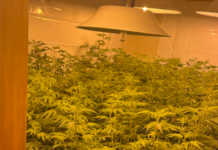Kaniva Covid watch – ‘Oku taupotu ‘i lalo ha fakamatala fakaTonga
Mutated versions of the Covid-19 virus that have appeared in New Zealand this year do not appear to have increased the severity of the disease.

According to the Ministry of Health public health precautions already in place to manage the Omicron variant are still working.
The latest version was detected in July.
A total of six mutations have been identified so far this year. Omicron was first detected in New Zealand in an international traveller who arrived in the country on 10 December 2021. Managed isolation was still being used at that time, so community spread of Omicron was not detected until mid-January.
Two Omicron sub-variants, BA.1 and BA.2, were introduced into New Zealand around the same time. BA.2 became dominant during the first three months of 2022.
BA.2 is the dominant version of the disease circulating in New Zealand at the moment.
New Omicron sub-variants BA.2.12.1, BA.4 and BA.5 were identified in travellers to New Zealand in late April 2022. These sub-variants were common overseas and likely to gradually replace BA.2, the Ministry said.
The Omicron subvariant BA.2.75 was detected in New Zealand for the first time on July 1, 2022 in two people who arrived in New Zealand.
Experts are still working out how it is transmitted, how it responds to immunisation and how severe it is.
There is no current evidence that it leads to more severe disease.
Because of the changes to the virus, the Omicron variant is more resistant to the protection provided by the original Pfizer vaccine, which was developed against the original SARS-CoV-2 virus.
However, the Ministry said the Pfizer vaccine still provided good protection from infection from the Omicron variant. Vaccination provided very good protection against developing severe disease if a person was infected.
Newer vaccines were being produced specifically for the Omicron variant, but had not yet been approved and were not in commercial production at this stage.
The Ministry said using public health precautions remained important to continue to protect New Zealand communities against Omicron. As well as vaccination, early detection of cases and isolation, staying home if you are sick, washing your hands, wearing a mask, improving ventilation and physical distancing remained important.
Vaccination figures
According to the Ministry’s latest report, the total number of vaccine doses administered nationally is 11,795,062.
The latest national vaccination figures show 596,464 second boosters have been administered.
A total of 2,732,622 first booster shots have been administered.
A total of 90.2% of people over 12 have completed a primary course.
A total of 39.4% of people over 50 eligible for a second booster have received one.
A total of 73.2% of people aged over 18 eligible for a first booster have received one.
Pacific Peoples
According to the Ministry’s latest report, 1123 Pacific Peoples aged between 16 and 7 have had their first booster. A total of 151,445 Pacific Peoples over 18 have received their first booster. A total of 18, 30 Pacific Peoples aged over 50 have received a second booster.
FAKAMATALA FAKATONGA
‘I ai e tui ko e vesini ‘o e vailasi Koviti 19 kuo ‘asi ‘i Nu’u Sila ni he ta’u ni ‘e ‘ikai ke ne tafunaki ‘e ia ‘a e kakaha e tupulaki ‘a e mahaki.
Fakatatau eni ki he fakatokanga mei he Potungaue Mo’ui ke tokangaekina’aki ‘a e Omikoloni.
Ko e e fotunga maliuliungofua pe muteisini ‘e ono ‘o e ‘Omikoloni kuo lava tala he ta’u ni . Ne ‘uluaki ‘ilo ‘a e ‘Omikoloni ‘i Nu’u Sila ‘i ha’ane hū mai ‘i ha taha folau fakavaha’apule’anga ‘o tu’uta mai ‘i Tisema ‘aho 10 2021. Na’e kei ngaue’aki ‘i he taimi ko ia ‘a hono fakamavahe’i ha taha ‘e puke, ko ia ai ne toki a’u mai ki he konga loto ‘o Sanuali kuo ‘ilo kuo ‘osi ma’u ‘a e ‘Omikoloni ‘i he komiunitii’.
Ko e ‘Omikoloni sub-variants ‘e ua ‘a ia ko e BA.1 and BA.2, ne hu mai ia ki Nu’u Sila ‘i he mei taimi tatau pe. Kae lahi ange ‘asi ‘a e BA.2 ‘i he ‘uluaki māhina ‘e tolu ‘o e 2022.
Ko e BA.2 ‘oku lolotonga malohi ‘ene fakaaoaao ‘i Nu’u Sila he taimi ni.
Na’e fuofua ‘ilo ‘a e fotunga subvariant BA.2.75 o e ‘Omikoloni ‘i Nu’u Sila ‘i Siulai ‘aho 2022 ‘i ha toko ua ne na tu’uta mai.
Oku kei ngaue ‘a e kau mataotao ke ‘ilo pe na’e anga fefe ‘ene mafola, angafefe ‘ene fute ki he huhu malu’i pea ‘oku kakaha fefe ‘ene fakatu’utamaki’.
Oku te’eki ai ha fakamooni ‘e hoko ‘eni ko ha mahaki kakaha.
Koeuhi ko e ngaahi liliu ki he vaalasi ‘oku mākalo ange ‘a e Omikoloni taimi ‘oku na fetakai ai mo e huhu malu’i ‘olisinolo Faisa, ‘a ia na’e fa’u ia ke malu’i ‘a e vailasi SARS-CoV-2.
Neongo ia kuo pehē ‘e Potungāue Mo’ui ‘oku kei lelei pe malu’i ‘a e huhu malu’i Faisā.
Ko e ngaahi vekisini fo’ou ange ko e fa’u ia ki he fotunga fo’ou ‘o e ‘Omikoloni, ka ‘oku te’eki ‘apuluvu ia pea ‘oku te’eki fakatau atu foki.
Pehe foki ‘e he Potungaue ‘oku kei mahuinga ‘a e ngaahi fakatokanga kuo tuku mai ke malu’i ‘a e ngaahi komiuniti Nu’u Sila mei he ‘Omikoloni’. Fakataha pe huhu malu’i, ko hono ‘uluaki ‘ilo ha ngaahi keisi ke fakamavahe’i, nofo ‘i ‘api kapau ‘oku ke puke, fanofano ho nima, tui ‘a e masaki, fakalahilahi ‘a e hū’anga ‘ea ki he feitu’u ‘oku ke nofo ai ‘oku kei fu’u mahu’inga ia.
Fakatatau ki he lipooti fakamuimui ‘a e Potungaue ko e fo’i huhu malu’i kuo huhu’i fakafonua ‘eni ‘e 11,795,062.
Ko e fika fakamuimui ko ia ‘oku ‘i ai ‘a e fo’i huhu pusita hono ua ‘e 596,464 mo e huhu malu’i pusitā ‘uluaki ‘e 2,732,622. Ko e fakakatoa ko e peseti ‘e 90.2% o e fanau ta’u ‘ova he 12 kuo lava fakakakato.
Peseti e 39.4% ‘ova he ta’u 50 kuo nau ‘osi huhu pusita.
Pea peseti ‘e 73.2 kakai ‘ova he ta’u 18 kuo ‘osi lava honau ‘uluaki huhu pusita.
Fakatatau ki he lipooti fakamuimui ‘a e Potungaue Mo’ui ko e kakai Pasifiki ‘e toko 1123 vaha’a ta’u 16 mo e 7 kuo ‘osi lava honau huhu pusitā. Ko e toko 151,445 ‘a e kakai Pasifiki ‘ova ‘i he ta’u 18 kuo ‘osi lava honau huhu pusitā ‘uluaki pea toko 1830 ‘ova he ta’u 50 kuo pusitā ua.







